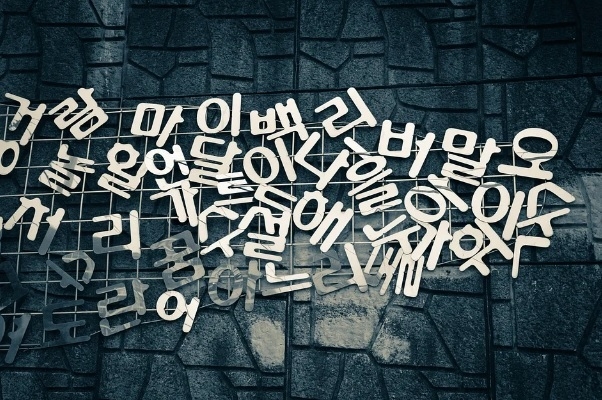
Hangul Day is a day to celebrate the day when King Sejong made Hunminjeongeum. The first name of Hangeul Day began as "Gagyanal" in 1926 and changed to Hangeul Day in 1928. After liberation, it was confirmed as October 9 of the solar calendar, and it was designated as a national holiday in 2006.
In addition, Hunminjeongeum, which contains the preface of King Sejong and the principles of the production of Hangeul, is designated as National Treasure No. 70, and it was registered as a UNESCO World Heritage Site in October 1997.
Before Hunminjeongeum was created, the people had to write in Chinese characters. For the general public, Chinese characters were difficult to learn and translate Korean words accurately.
King Sejong, who felt sorry for the people who could not write properly due to lack of letters, created Hunminjeongeum with scholars of Jiphyeonjeon Hall that the people could easily learn and write.
Hangul is a very practical character that can simply create all sounds by combining consonants and vowels. It is modeled after the oral structure, so anyone can easily learn and use it. Thanks to Hangeul, the illiteracy rate of the Korean people is less than 2%, which is one of the lowest illiteracy countries in the world.
Hunminjeongeum was completed in 1443 AD in the 25th year of King Sejong's reign, and was spread to the world in 1446, the 28th year of King Sejong's reign, after a three-year test period.
However, it is said that it took a long time for the general public to use Hangul after it was distributed. The four major classes of Joseon were immersed in the life of Chinese characters for a long time, and since the suppression of Hangeul during the Yeonsan-gun period, Hangul has been reduced to letters used by women.
However, after the time of enlightenment, Hangeul was widely used in newspapers and magazines thanks to the efforts of many Korean linguists. Hangeul encountered a crisis due to the policy of exterminating Korean words at the end of the Japanese colonial period, but it is said that it has been taught and learned Korean and Hangeul freely along with liberation and reaches the present day.
In commemoration of the creation and excellence of Hangeul on the "2022 Hangul Day Legal Holiday", why don't we feel the gratitude of Hangeul once again?
(한국어 번역)
한국다문화뉴스=김정해 기자ㅣ 한글날은 세종대왕이 훈민정음을 만드신 날을 기념하는 날이다. 한글날의 첫 이름은 1926년 ‘가갸날’이라고 시작되어 1928년 한글날이라는 이름으로 바꾸었다. 광복 후 양력 10월 9일로 확정되었고, 2006년에 국경일로 지정되었다.
또한 세종어제 서문과 한글의 제작 원리가 담긴 훈민정음은 국보 제70호로 지정되어 있으며, 이것은 1997년 10월 유네스코 세계기록유산으로 등록되었다.
훈민정음이 창제되기 전까지 백성들은 한자로 글을 적어야 했다. 일반 백성에게 중국 문자인 한자는 배우기 어렵고 우리말을 정확하게 옮기기도 어려운 문자였다.
글자가 없어 글을 제대로 쓰지 못한 백성을 불쌍히 여긴 세종대왕은 집현전 학자들과 함께 백성들이 쉽게 배우고 쓸 수 있는 훈민정음을 만들었다.
한글은 간단하게 자음과 모음의 결합으로 모든 소리를 만들어 낼 수 있는 아주 실용적인 문자다. 구강구조를 본떠서 만들었기 때문에 누구나 쉽게 배울 수 있고 쓸 수 있다. 한글 덕분에 우리나라 국민의 문맹률은 2%로 미만으로 전 세계에 가장 문맹률이 낮은 나라 중 하나다.
훈민정음은 세종대왕 25년 곧 서기 1443년에 완성하여 3년 동안의 시험 기간을 거쳐 세종 28년인 서기 1446년에 세상에 반포되었다.
하지만 한글이 반포된 후 일반 백성들이 사용하기까지 오랜 시간이 걸렸다고 한다. 조선의 사대부계층이 오랜 한자, 한문 생활에 젖어있었고, 연산군 때의 한글 탄압 이후로 한글은 아녀자들이 쓰는 글자로 전락했다.
그러나 개화기 이후 많은 국어학자의 노력으로 한글이 신문, 잡지 등에 널리 사용하게 되었고 일제 강점기 말기에 우리말 말살 정책으로 큰 위기를 맞이했지만, 광복과 더불어 우리말과 한글을 마음 놓고 가르치고 배우게 되어 오늘날에 이르렀다고 한다.
한글을 기념하는 '2022년 한글날 법정 공휴일'에 한글 창제와 그 우수성을 기리며, 한글의 고마움을 다시 한번 느껴보면 어떨까.




















